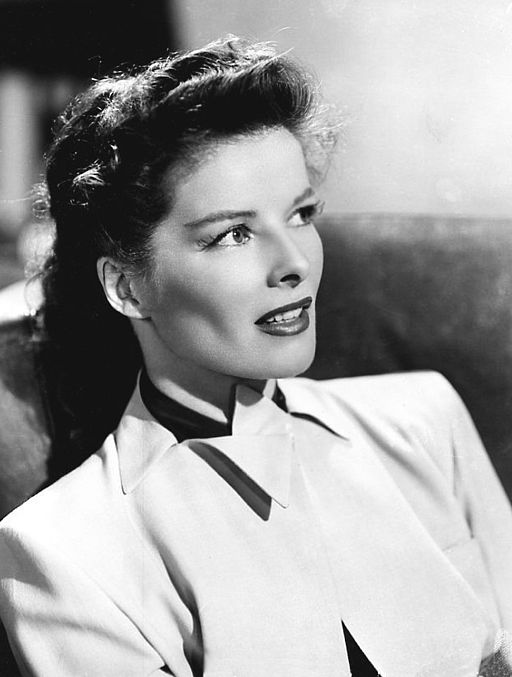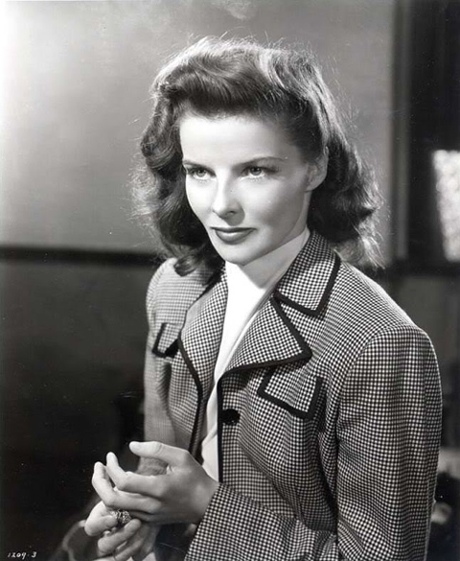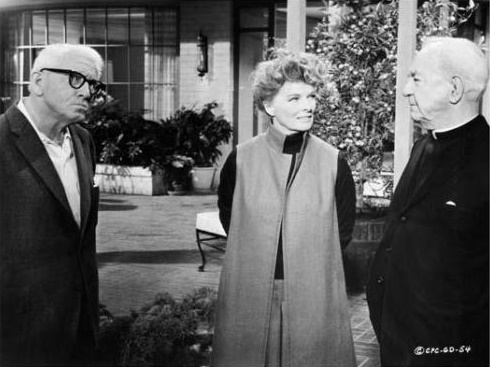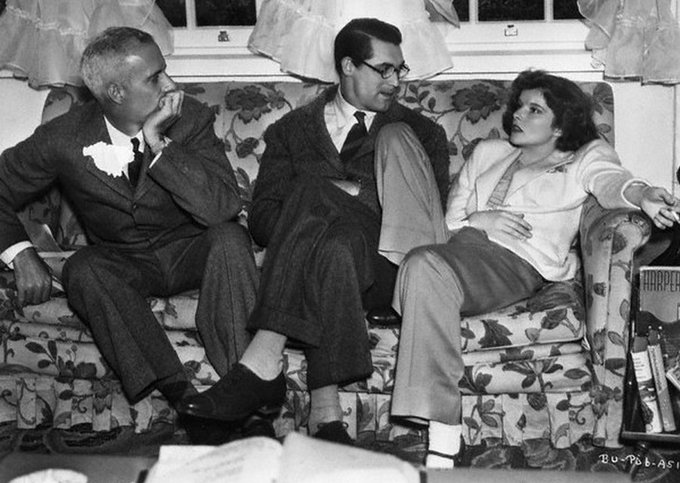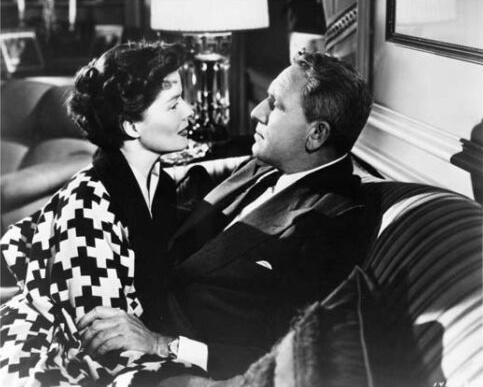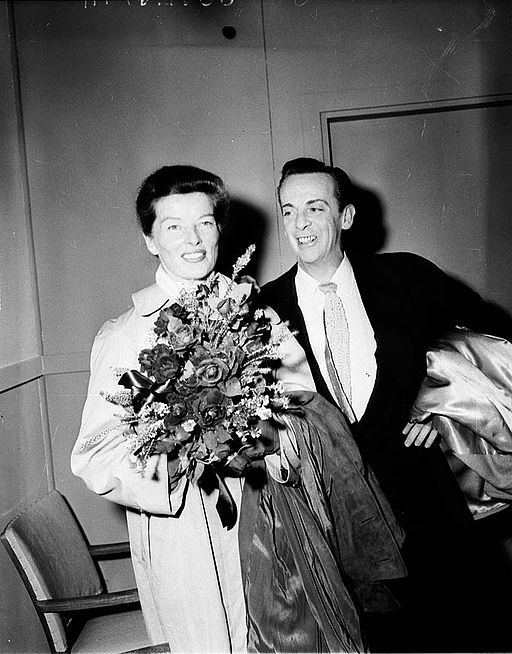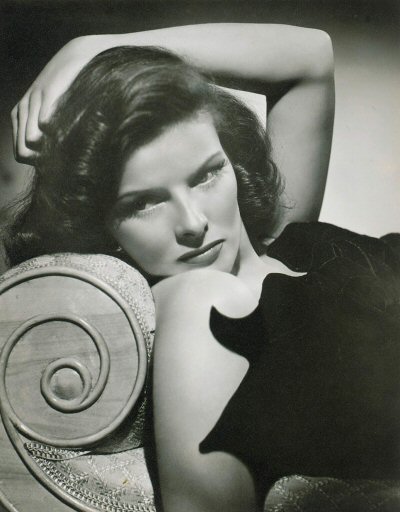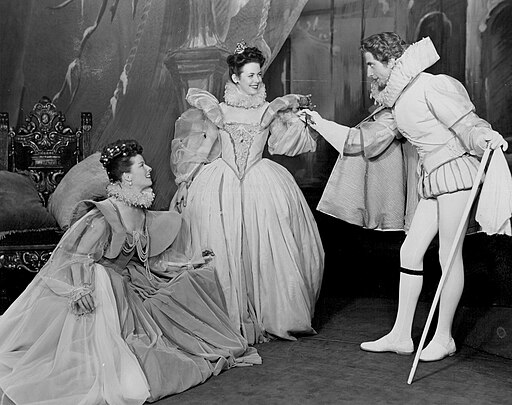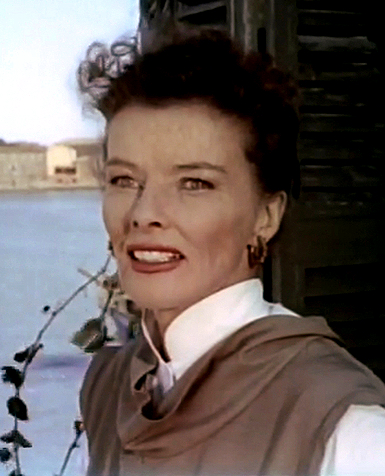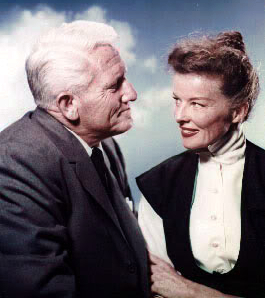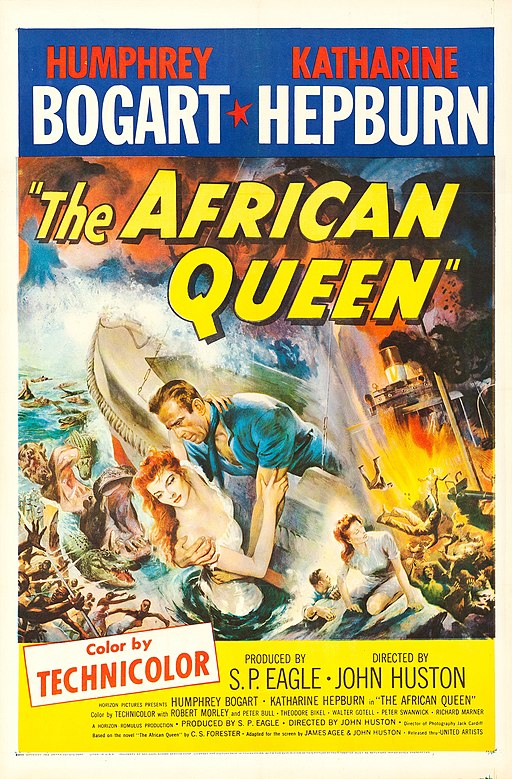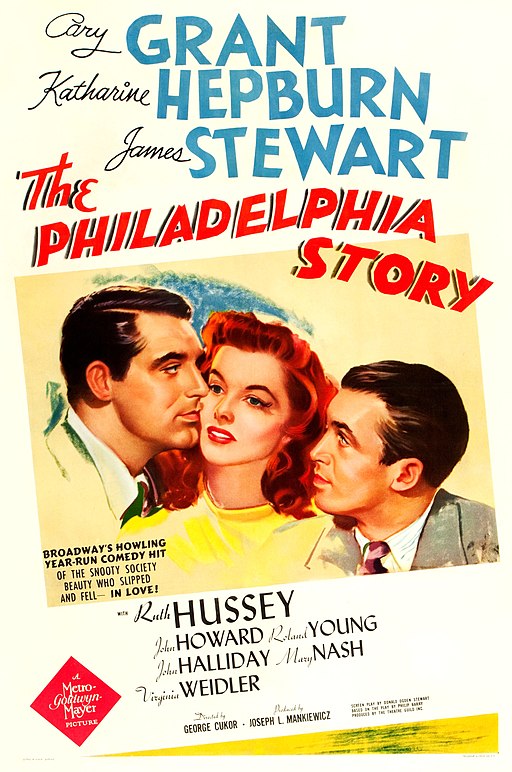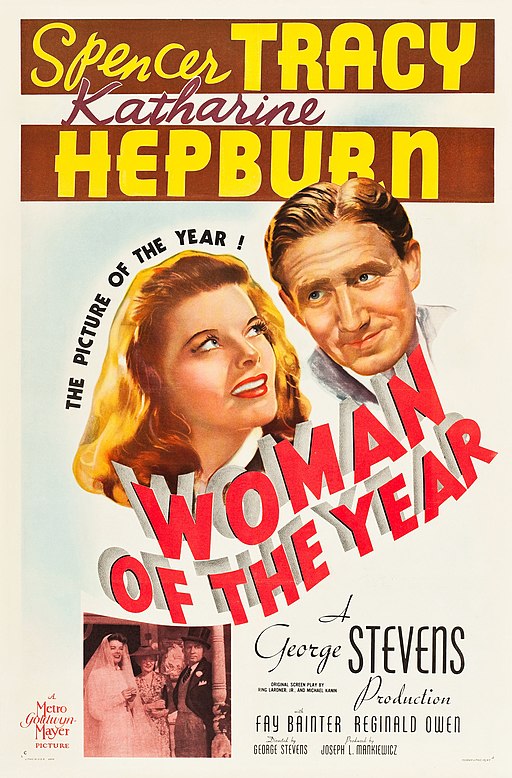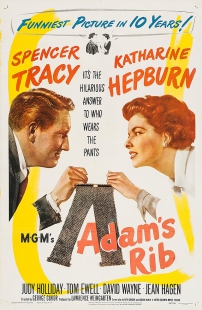Katharine Hepburn
back| Full Name | Katharine Houghton Hepburn |
| Stage Name | Katharine Hepburn |
| Born | May 12, 1907 |
| Birthplace | Hartford, Connecticut, USA |
| Died | June 29, 2003 |
| Buried | Hepburn family plot in Cedar Hill Cemetery, Hartford |
| Married to | Ludlow Ogden Smith (m. 1928–1934; divorced) |
| Children | None |
| Notable films | Morning Golry (1933) - The Philadelphia Story (1940) - Woman of the Year (1942) - Guess Who's Coming to Dinner (1967) - On Golden Pond (1981) |
Katharine Hepburn
Trailblazing Icon of Independence and Wit
Katharine Hepburn's career spanned over 60 years, during which she received a record four Academy Awards for Best Actress.
She was known for her fierce independence and pioneering spirit, which challenged Hollywood's norms and paved the way for future generations of actresses. Her unique style, distinctive voice, and strong personality made her a beloved and enduring figure in the world of cinema.
Related
Katharine Hepburn (1907 - 2003)
Biography and Overview of her Career
Katharine Houghton Hepburn was born on May 12, 1907, in Hartford, Connecticut, to a well-to-do family. Her father, Thomas Hepburn, was a successful urologist, and her mother, Katharine Martha Houghton, was a leader in the women's suffrage movement. Raised in a progressive environment that encouraged intellectual development, Katharine grew up with a strong sense of independence and self-confidence. Tragedy struck early when she discovered the body of her beloved older brother, Tom, who had died by suicide. This deeply affected Katharine and shaped her resilient and determined personality.
Education and Early Career
Hepburn attended Bryn Mawr College, where she became interested in acting. After graduating in 1928, she began to pursue a career on the stage. Her striking appearance, with her athletic build and sharp cheekbones, coupled with her obvious talent and distinctive, patrician New England accent, quickly gained her attention.
Path to Stardom
Katharine's early career in Broadway productions wasn't without challenges, but her performance in "The Warrior's Husband" in 1932 caught the attention of Hollywood. She was soon offered a contract with RKO Radio Pictures and made her film debut in "A Bill of Divorcement" in 1932, which was a success. This was followed by "Morning Glory" in 1933, for which she won her first Academy Award.
Challenging Hollywood Norms
Hepburn's career faced ups and downs, partly due to her refusal to conform to Hollywood norms. She was fiercely independent, often clashing with studio heads and refusing to participate in typical star-making publicity. This led to a period where she was labeled "box office poison."
Comeback and Triumph
Undeterred, Hepburn acquired the rights to the play "The Philadelphia Story," and her performance in the 1940 film adaptation revitalized her career. From then on, she maintained control over her career choices, often taking unconventional roles that challenged societal norms.
Personal Life and Marriages
Katharine married Ludlow Ogden Smith in 1928, a union that ended in divorce in 1934. She famously had a long-term relationship with Spencer Tracy, her co-star in nine films. Their relationship lasted 26 years, until Tracy's death in 1967. Despite the intensity of their bond, they never married, partly because Tracy, a devout Catholic, remained married to his estranged wife.
Passions and Interests
Hepburn was known for her love of sports and her active lifestyle, often playing tennis and golf. She was passionate about fashion, favoring trousers over skirts at a time when it was unusual for women, thus becoming a style icon with her androgynous fashion sense.
Later Years and Death
In her later years, Hepburn continued to act, earning accolades for her performances in films like "On Golden Pond" (1981). She lived independently in her New York City townhouse until old age, maintaining her privacy and independence.
Katharine Hepburn died on June 29, 2003, at the age of 96. The cause of death was reported as natural causes. She had been in declining health for several years but remained spirited and autonomous until the end. Hepburn left behind a legacy as one of the greatest actresses in the history of American cinema, remembered for her remarkable talent, fierce independence, and trailblazing role as a woman in Hollywood.
The only time Katharine Hepburn appeared at the Oscar Ceremony:
Analysis of the Acting Style of Katharine Hepburn:
Katharine Hepburn's acting style was distinctive, dynamic, and ahead of her time, contributing significantly to her status as a Hollywood icon. Her approach to acting can be analyzed through various aspects:
Strength and Independence:
Hepburn was known for portraying strong, independent women, often challenging traditional gender norms. Her characters frequently displayed a mix of intelligence, wit, and assertiveness. This was not just an on-screen persona; it mirrored her off-screen personality and beliefs, making her performances feel authentic and groundbreaking for the era.
Naturalistic Approach:
At a time when many of her contemporaries were embracing a more theatrical style, Hepburn was known for her naturalistic approach to acting. She had a unique ability to convey emotions subtly and realistically, making her characters relatable and deeply human. This naturalism was particularly evident in her delivery of dialogue; she often used a conversational tone that made even scripted lines feel spontaneous and genuine.
Distinctive Voice and Diction:
Hepburn's patrician New England accent and her distinctive, melodic voice were integral to her acting style. Her clear, crisp diction and the rhythmic cadence of her speech added a unique charm to her characters, making even ordinary dialogue memorable.
Physicality and Movement:
Hepburn's background in dance and her athletic physique allowed her to bring a sense of grace and strength to her roles. She often used her body language effectively to convey character traits. Whether playing an elegant socialite or a tomboyish figure, her movements were purposeful and added depth to her characters.
Emotional Depth and Versatility:
Hepburn could portray a wide range of emotions, from vulnerability and warmth to sternness and resilience. Her ability to transition smoothly between these emotions within a single performance contributed to her reputation as a versatile actress. In films like "The Philadelphia Story" and "On Golden Pond," she demonstrated her capacity to handle both comedy and drama with equal skill.
Chemistry with Co-Stars:
Her on-screen chemistry with co-stars, particularly Spencer Tracy, was noteworthy. She had a way of elevating her performance in response to her scene partners, creating a dynamic and engaging interaction that resonated with audiences.
Evolution Over Time:
Hepburn's style evolved over her six-decade career. In her early years, she exuded youthful energy and a rebellious spirit. As she matured, her performances gained in depth and complexity, reflecting her own life experiences.
Influence and Legacy:
Hepburn's acting style influenced generations of actresses. She broke away from the mold of what a female star was supposed to be like in Hollywood, both in the roles she chose and the way she played them. Her legacy is seen in the more nuanced, strong female characters that became prevalent in films and television.
Best Performances of Katharine Hepburn:
Her Relationship with Howard Hughes:
Katharine Hepburn's relationship with Howard Hughes was a notable chapter in her life, marked by its unique dynamics and the coming together of two highly independent and influential personalities.
Background of Howard Hughes:
Howard Hughes was a multifaceted individual: an aviator, film producer, and business magnate. He was known for his eccentricity, innovative spirit, and varied business ventures, including significant achievements in aviation and film production.
Nature of Their Relationship:
-
Began in the 1930s: Hepburn and Hughes met and began their relationship in the mid-1930s, during a period when both were prominent figures in their respective fields.
- Bond Over Shared Interests: They shared a love for aviation and golf, which played a significant part in their bonding. Hughes, known for his aviation exploits, reportedly even offered flying lessons to Hepburn.
- Non-Conformist Relationship: The relationship was unconventional, much like Hepburn and Hughes themselves. Both were fiercely independent, and their relationship was more of a meeting of equals rather than a traditional Hollywood romance.
- Public and Media Attention: Given their high-profile statuses, their relationship attracted considerable attention from the media and the public, adding a layer of scrutiny and fascination.
Impact on Hepburn's Career:
- Supportive of Her Independence: Hughes admired Hepburn's independence and her non-conformist approach to life. He reportedly supported her decision to buy out her contract with RKO Radio Pictures, a move that allowed her more control over her career.
- Navigating Hollywood Together: During their time together, both Hepburn and Hughes were navigating the complex landscape of Hollywood, each in their own way. This shared experience likely added depth to their relationship.
The End of Their Relationship:
- Maintained Friendship: While their romantic relationship did not last, they remained friends. Their breakup was reportedly amicable, and they continued to respect and admire each other.
Portrayal in Media and Film:
- The relationship between Katharine Hepburn and Howard Hughes has been a subject of fascination and has been depicted in various media, including the 2004 film "The Aviator," where Cate Blanchett portrayed Hepburn and Leonardo DiCaprio played Hughes.
Memorable Quotes from Katharine Hepburn:
On Her Independent Spirit:
"If you obey all the rules, you miss all the fun."
"I never realized until lately that women were supposed to be the inferior sex."
On Acting and Career:
"Acting is a nice childish profession - pretending you're someone else and, at the same time, selling yourself."
"As for me, prizes are nothing. My prize is my work."
On Love and Relationships:
"Love has nothing to do with what you are expecting to get – only with what you are expecting to give – which is everything."
"If you want to sacrifice the admiration of many men for the criticism of one, go ahead, get married."
On Age and Experience:
"The time to make up your mind about people is never."
"Life is hard. After all, it kills you."
On Self-Perception and Individuality:
"I'm a personality as well as an actress. Show me an actress who isn't a personality and you'll show me a woman who isn't a star."
"I never lose sight of the fact that just being is fun."
On Success and Failure:
"Without discipline, there's no life at all."
"Not everyone is lucky enough to understand how delicious it is to suffer."
On Women and Empowerment:
"Plain women know more about men than beautiful ones do."
Trivia
A] Katharine Hepburn’s House:
Katharine Hepburn's primary residence, particularly in her later years, was a distinctive home in the Fenwick neighborhood of Old Saybrook, Connecticut. This house held a special place in Hepburn's life and is quite famous for several reasons:
Location and Description:
- Fenwick, Old Saybrook: The house was located in the small, affluent borough of Fenwick in Old Saybrook, situated at the mouth of the Connecticut River where it meets Long Island Sound. This location offered stunning views of the water and a tranquil environment.
- Family Connection: The original house was bought by Hepburn's family in 1913, making it a place of significant personal history and emotional value for Hepburn.
Architectural Features:
- New England Style: The house, reflective of classic New England architecture, featured a spacious layout with several bedrooms, large windows, and a waterfront view.
- Rebuilt After a Storm: In 1938, a devastating hurricane destroyed the original house. Hepburn participated actively in rebuilding and redesigning the house, creating a structure raised on concrete pilings to protect it from future storms.
B] Katharine Hepburn Pants:
Katharine Hepburn's association with wearing pants is significant both in terms of her personal style and its broader cultural impact. She was one of the early adopters of trousers for women at a time when it was considered unconventional, and even rebellious, for women to wear them. Here are some key points about Katharine Hepburn and her choice of pants:
- Comfort and Practicality: Hepburn preferred wearing pants for their comfort and practicality. She was known for her active lifestyle, including playing sports, and trousers suited her needs better than the restrictive dresses and skirts that were the norm for women at the time.
- Signature Look: Trousers became a staple of Hepburn's wardrobe, both on-screen and off. She often paired them with simple shirts and loafers or sneakers, creating a look that was both casual and effortlessly elegant.
- Defying Fashion Conventions: In the 1930s and 1940s, women typically wore dresses and skirts. Hepburn's choice to wear trousers publicly defied these societal norms and was seen as a bold statement of independence and non-conformity.
- Incidents and Reactions: There are anecdotes about studios and public places where Hepburn was asked to not wear pants. Legend has it that she would walk around in her underwear if her pants were taken away to be pressed, insisting on wearing them despite the norms of the time.
- Trendsetting: Hepburn's penchant for trousers contributed to popularizing them among women. Her influence in fashion was substantial, as she was a widely admired and highly visible figure.
- Iconic Status: Her style has been celebrated for its androgynous chic and timeless appeal. Hepburn is often cited as a fashion icon for her distinctive, personal style that challenged traditional femininity.
- Embodying Independence: Hepburn's choice of pants symbolized her broader approach to life. Just as she chose roles that portrayed strong, independent women, her personal fashion choices also reflected these traits.
- Influence on Women's Liberation: While Hepburn did not set out to be a feminist icon in terms of fashion, her embrace of trousers came to be seen as a symbol of the women's liberation movement, representing freedom and equality.
C] How Tall was Katharine Hepburn?
Katharine Hepburn was approximately 5 feet 7½ inches (171 cm) tall.
Significance of her Performance in “Morning Glory”:
Katharine Hepburn's role in "Morning Glory" (1933) was a turning point in her career and held significant importance for several reasons:
- Early Recognition: "Morning Glory" was only Hepburn's third film, but her performance as Eva Lovelace, an aspiring actress who navigates the trials and tribulations of the theater world, immediately caught the attention of both the public and critics. It established her as a talented actress with a unique screen presence.
- First Oscar Win: Hepburn won her first Academy Award for Best Actress for her role in "Morning Glory." This win was particularly significant as it came early in her career, setting a precedent for her future success in Hollywood. It also placed her among the top actresses of her time.
- Defining Character Traits: Eva Lovelace's character showcased several traits that would come to define Hepburn's on-screen persona – ambition, intelligence, and a certain rebellious spirit against societal norms. The role resonated with Hepburn's personal qualities, such as her independence and determination.
- Foundation for Longevity: The success of "Morning Glory" helped establish Hepburn as a bankable star in Hollywood, leading to a series of roles in the 1930s. Although she would later face a period of decline (being labeled as "box office poison"), her early achievements, including this Oscar win, contributed to her resilience and ability to make a comeback.
- Pathway to Challenging Roles: The film's success opened the door for Hepburn to take on more challenging and unconventional roles. Her portrayal of Eva showcased her ability to bring depth and nuance to complex characters, leading to more significant opportunities that defied the typical roles offered to women in that era.
- Trailblazing for Actresses: Hepburn's role in "Morning Glory" and its subsequent success helped in paving the way for actresses to take on more varied and substantial roles in Hollywood. It contributed to a gradual shift in how women were portrayed on screen, moving away from purely ornamental roles to those with substance and agency.
In summary, Katharine Hepburn's performance in "Morning Glory" was not only a personal triumph but also a pivotal moment in her career. It won her critical acclaim, set the tone for her future in film, and helped to cement her status as one of Hollywood's most enduring and respected actresses.
Awards and Recognition:
Academy Awards (Oscars)
- Nominations:
- 1934: Best Actress for "Morning Glory" (Won)
- 1940: Best Actress for "Alice Adams"
- 1941: Best Actress for "The Philadelphia Story"
- 1943: Best Actress for "Woman of the Year"
- 1952: Best Actress for "The African Queen"
- 1956: Best Actress for "Summertime"
- 1959: Best Actress for "The Rainmaker"
- 1963: Best Actress for "Long Day's Journey into Night"
- 1968: Best Actress for "Guess Who's Coming to Dinner" (Won)
- 1969: Best Actress for "The Lion in Winter" (Won, tied with Barbra Streisand for "Funny Girl")
- 1982: Best Actress for "On Golden Pond" (Won)
- Achievements:
- Hepburn holds the record for the most Oscars won by any actor or actress in the Best Actress category, with four wins.
Emmy Awards
- Nominations:
- 1974: Outstanding Lead Actress in a Special Program - Drama or Comedy for "Love Among the Ruins" (Won)
- 1993: Outstanding Lead Actress in a Miniseries or a Special for "The Man Upstairs"
Tony Awards
- Nominations:
- 1960: Best Actress in a Play for "A Matter of Gravity"
BAFTA Awards
- Nominations:
- 1968: Best Actress for "Guess Who's Coming to Dinner"
- 1968: Best Actress for "The Lion in Winter"
Golden Globe Awards
- Nominations:
- 1953: Best Actress in a Motion Picture – Drama for "The African Queen"
- 1968: Best Actress in a Motion Picture – Drama for "The Lion in Winter"
- 1982: Best Actress in a Motion Picture – Drama for "On Golden Pond"
- Achievements:
- 1968: Cecil B. DeMille Award for lifetime achievement
Other Honors and Recognitions
- Kennedy Center Honors in 1990 for her lifetime contributions to American culture through the performing arts.
- Screen Actors Guild Lifetime Achievement Award.
- Inducted into the American Theater Hall of Fame.
- Hepburn was also honored by various film festivals and organizations throughout her career, recognizing her significant impact on the film industry.
Movies featuring Katharine Hepburn:
1930s
- 1932 - "A Bill of Divorcement": Hepburn plays Sydney Fairfield, a daughter dealing with the return of her father who had been institutionalized for insanity.
- 1933 - "Christopher Strong": Portrays Lady Cynthia Darrington, an aviator who falls in love with a married man.
- 1933 - "Morning Glory": As Eva Lovelace, an aspiring actress, Hepburn won her first Oscar.
- 1934 - "Little Women": Hepburn shines as Jo March in this adaptation of Louisa May Alcott's novel.
- 1934 - "Spitfire": Plays Trigger Hicks, a mountain girl who believes she has healing powers.
- 1935 - "The Little Minister": As Babbie, she is involved in a forbidden romance with a Scottish minister.
- 1935 - "Break of Hearts": Portrays Constance, a young composer who falls for a famous conductor.
- 1935 - "Alice Adams": Features as a middle-class woman aspiring to climb the social ladder.
- 1936 - "Sylvia Scarlett": As Sylvia, she disguises herself as a boy to help her father escape the law.
- 1936 - "Mary of Scotland": Plays Mary, Queen of Scots, focusing on her battle with Queen Elizabeth I.
- 1937 - "Quality Street": Hepburn is Phoebe Throssel, a woman who pretends to be her own niece to win the heart of a returning soldier.
- 1937 - "Stage Door": As Terry Randall, she is an aspiring actress among a group of theater hopefuls.
- 1938 - "Bringing Up Baby": A classic screwball comedy where she plays a quirky heiress involved in a series of misadventures.
- 1938 - "Holiday": Portrays Linda Seton, a free-spirited woman involved in a complex love story.
1940s
- 1940 - "The Philadelphia Story": As Tracy Lord, a socialite whose wedding plans are complicated by her ex-husband and a tabloid journalist.
- 1942 - "Woman of the Year": Plays Tess Harding, a political journalist, marking her first pairing with Spencer Tracy.
- 1942 - "Keeper of the Flame": As Christine Forrest, she's involved in a mystery surrounding her husband's death.
- 1944 - "Dragon Seed": Portrays a Chinese peasant in this war drama.
- 1946 - "Undercurrent": As Ann Hamilton, she's a woman caught in a mysterious and troubled marriage.
- 1947 - "The Sea of Grass": Plays Lutie Cameron in this Western drama.
- 1947 - "Song of Love": As Clara Schumann, depicting the life of the famous composer Robert Schumann.
- 1948 - "State of the Union": Hepburn is Mary Matthews in this political drama.
- 1949 - "Adam's Rib": A courtroom drama where she and Tracy play married lawyers on opposite sides of a case.
1950s
- 1951 - "The African Queen": As Rose Sayer, opposite Humphrey Bogart, in this classic adventure.
- 1952 - "Pat and Mike": Plays a sportswoman with Tracy as her manager.
- 1955 - "Summertime": Portrays Jane Hudson, a single American woman finding romance in Venice.
- 1956 - "The Rainmaker": As Lizzie Curry, she's a spinster finding love.
- 1957 - "The Iron Petticoat": Plays a Russian pilot who defects.
- 1959 - "Suddenly, Last Summer": A drama where she portrays Violet Venable, dealing with the death of her son.
1960s
- 1962 - "Long Day's Journey Into Night": As Mary Tyrone, in this adaptation of Eugene O'Neill's play.
- 1967 - "Guess Who's Coming to Dinner": Plays Christina Drayton, a liberal mother whose attitudes are challenged when her daughter brings home a black fiancé.
- 1968 - "The Lion in Winter": As Eleanor of Aquitaine, opposite Peter O'Toole as Henry II.
1970s and 1980s
- 1971 - "The Trojan Women": Plays Hecuba in this adaptation of the Euripides play.
- 1973 - "A Delicate Balance": As Agnes in this drama based on Edward Albee's play.
- 1975 - "Rooster Cogburn": A Western, starring alongside John Wayne.
- 1978 - "Olly, Olly, Oxen Free": A family adventure film.
- 1981 - "On Golden Pond": Plays Ethel Thayer, in this touching story of an aging couple.

